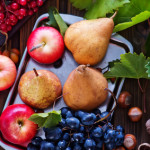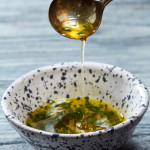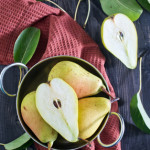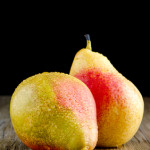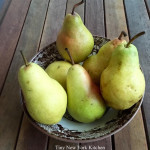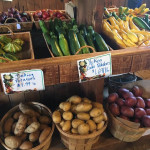Cheese Boards are a no-cook, sure-to-please option for any holiday celebration. Build a cheeseboard that’s affordable yet special. Then toast the season with festive cocktails.
A few inexpensive ingredients and simple homemade touches are all you need for a spectacular, special occasion-worthy spread. Here are some smart tips to deck your board with festivity and flavor without breaking the bank.
For a classic, colorful centerpiece, make your own cranberry and herb cheeseball. Start with a container of spreadable cheese and form into a ball. Use a sheet of plastic wrap to avoid messy hands. Roll the ball in a combination of finely chopped dried cranberries, parsley, and chives until thoroughly coated. Let sit at room temperature for 15 minutes before serving.
No need to buy expensive cheeses. Inexpensive cheddar is always a crowd pleaser. Skip the pre-cut cubes and cut the block yourself. Orange or white, mild or extra sharp. Cheddar is always a favorite.
Upgrade affordable goat cheese by rolling the log in herbs and spices, like dried thyme, dried oregano, or crushed rainbow peppercorns for a beautiful, flavorful crust. You could also keep it plain and top with jarred pepper jelly or mango chutney.
Instead of mixed nuts, opt for crunchy snack mixes, which are often less expensive and just as delicious. For the board, look for one with little or no seasoning.
Give a budget-friendly feta or mini mozzarella balls a flavor boost by marinating cubes in olive oil with herbs like parsley, oregano, or rosemary, and other seasonings like sliced chilis, crushed garlic, or lemon zest. Refrigerate overnight or up to 3 days.
Round out your cheese board with other delicious items like fresh or dried fruit (dried apricots, figs, grapes, and sliced pears), pitted olives, and plain crackers.
Pair your cheese board with a festive holiday beverage and enjoy!
©Tiny New York Kitchen © 2020 All Rights Reserved
The fruit that is available in the autumn isn’t nearly as abundant as the fruit that’s available in the summer, but there are actually some delicious seasonal autumn fruits that you can look forward to eating. Delicious, tasty, and healthy seasonal autumn fruit is also a refreshing alternative to the heavier food we tend to eat in the colder months. If you love fruit and have been missing summer’s bounty, there are plenty of autumn fruits that will satisfy your craving.
Apples are one of the quintessential autumn fruits. Every fall you will see crates full of apples at farmers’ markets. Try venturing out and get some of the lesser known varieties of apples. Each variety tastes very different and autumn is the perfect time to try all of the different varieties.
Pears are best in autumn even though you can get them year-round. In fall they make a great snack. Like apples, there are many different varieties of pears. Try as many different varieties as you can.
Pomegranates are so delicious because they’re the right combination of tart and sweet. The best pomegranates start being available in late October and early November, which means you must wait for most of autumn for them to be available.
Cranberries are not a fruit that most people think of eating. In fact, cranberries usually only make an appearance as cranberry sauce or jelly. However, there are actually other uses for this tart fruit. They make excellent smoothies when blended with oranges and bananas. Cranberries also taste great when roasted along with vegetables because they add a nice tart bite.
Grapes are a fruit that people eat by the handful. They’re delicious, and they make a nice healthy snack that children and adults love. If you have a chance, try some concord grapes this fall. They are a nice treat and a change from the globe grapes that we always find in the market.
Figs start making an appearance in grocery stores in early fall. They can be expensive, but they’re worth it. They have a wonderful sweet flavor that’s not too intense. Figs do have delicate skin so if you do buy them, make sure you plan on eating them right away.
Persimmons are a sweet fruit, but when you get persimmons you should make sure they’re fully ripe before eating them. Unripe persimmons are very astringent. Make sure they are plump and juicy before taking a bite.
“Work With What You Got!”
©Tiny New York Kitchen © 2019 All Rights Reserved
In a bowl mix baby greens or baby spinach with 1 peeled, quartered and thinly sliced apple or pear. 1 apple or pear for every 2 people. Pour over enough Maple Mustard Dressing to moisten. Transfer to salad bowls and garnish with toasted chopped pecans and crumbled gorgonzola cheese. Enjoy!
“Work With What You Got!”
©Tiny New York Kitchen © 2018 All Rights Reserved
Beautiful autumn! The tapestry of autumn is tinged with splendor, as nature sheds its robe of green and garbs itself in the richly textured colors of fall. As leaves begin to turn deep shades of burnt orange, russet, gold, umber burgundy, cooks seek out lavish and luscious seasonal ingredients.
Apples
Pears
Cranberries
Persimmons
Pomegranates
Cabbage
Rutabaga
Turnips
Cauliflower
Beets
Sweet potatoes
Pumpkins
Squash
“Work With What You Got!”
©Tiny New York Kitchen © 2018 All Rights Reserved
Drizzling olive oil over savory fruits like tomatoes is second nature, but put it on sweet fruit and people start to think you’re crazy. Consider this: Olive and watermelons are both fruits, and just as vegetable-driven salads need fat to balance salt and acid, fruit salads crave the mouth-coating richness of oil to complement their sweetness and acidity. Olive oil is ideal since it brings a sharp aromatic flavor of its own that carries other savory ingredients, like nutty sharp cheeses and spicy sauce. Look for lighter, grassy oils to avoid overwhelming your fruits, but even a bold, peppery one can play nice with whatever you care to throw at it.
“Work With What You Got!”
©Tiny New York Kitchen © 2018 All Rights Reserved
There are almost as many varieties of pears as there are apples, but only a dozen or so are readily available in stores. Pears are related to apples, but are much more fragile and are more often eaten raw than cooked. They have fine white granular flesh and a core containing the pips (seeds). Most pears are wider at the bottom than the top, but some are apple-shaped, while calabash pears have an elongated neck, like a gourd. Pears tend to be less vividly colored than apples, usually varying from bronze to gold, green or yellow, although there are also some red-bushed varieties such as Red Williams and Forelle.
Anjou: These large pears have greenish yellow skin with small brown spots. The flesh is juicy and sweet. Suitable for eating and cooking.
Beurre Superfin: Large, with a tough golden green, russet skin, this is the perfect eating pear. Its flesh is sweet and juicy and it is less grainy than other pears.
Conference: First cultivated in the English country of Berkshire in 1770, these long, conical pears have remained a favorite because they keep so well. The yellowish-green skin with extensive russet turns more yellow when the pears are mature. The granular flesh is tender, sweet and juicy. Conference pears are excellent for eating and cooking.
Comice: This large, roundish pear is one of the finest of all pears, with creamy white, melting, very juicy flesh and a sweet, aromatic flavor. The thick, yellowish-green skin is covered with speckles and patches of russet. Comice are best eaten raw and they are delicious served with Camembert or Brie cheese.
Forelle: This beautiful golden pear has a dark red flush on one side. The grainy flesh is crisp, with a fresh flavor. Eaten raw, it goes particularly well with cheese, but is at its best when cooked.
Laxton’s Foremost: Yellow-skinned and lightly russet, this is one of the largest pears. Its creamy colored flesh is very juicy and granular. It does not keep well and, as it turns brown from the inside out, there may be no external signs that the fruit is past its best.
Packham’s Triumph: The first successful Australian pear was produced by Charles Packham in 1896 and remains a favorite. Slow-ripening, it is a largish dessert pear, with a smooth green, lightly russet skin that changes to yellow as it ripens. The soft white flesh is succulent and sweet, with a touch of acidity.
Red Williams: These pears have shiny, speckled skins, at first green with a red blush, turning to yellow flushed with red. The flesh is sweet and juicy.
Bartlett/Williams Bon Chrétien: These irregularly shaped pears are generally swollen on one side of the stalk. The speckled skin is golden yellow with russet patches and sometimes a red tinge. The delicious tender flesh is creamy-white and very juicy, and the flavor is sweet and slightly musky. Bartletts are suitable for cooking and eating, but unfortunately these superb pears do not keep well.
Winter Nelis: This roundish medium-size pear has thick, but tender greenish-yellow skin with cinnamon-brown russet and sometimes a pink flush. The creamy-white flesh is soft and very juicy, and the flavor is sweet. These pears can be cooked or eaten raw.
Perry Pears: With the demise of the most famous of the sparkling alcoholic pear drinks, perry pears have largely fallen into disfavor. A few small producers still press perry pears into juice, wine or “champagne” perry, but although there are still about 300 known varieties, you will never find these in stores. Perry pears are smaller than their dessert counterparts. Although they look delicious, they contain large quantities of tannin and taste bitter and astringent, whether raw or cooked.
Asian/Nashi Pears: There are many varieties of Asian pears, but their characteristics are very similar. They are round rather than a pear shape, the fruits have a golden brown russet skin and they have very crisp, white juicy flesh. The crunchy texture resembles that of an apple, but is more granular. It would be a shame to spoil the crisp texture by cooking. Asian pears are best eaten straight from the refrigerator, to be enjoyed as a “drink of the stalk”. They also make an excellent addition to fruit salads or savory winter salads.
Tientsin: These Asian pears from China and Korea are very similar to Asian Nashi pears in taste and texture. They are available when Asian pears are out of season. They look rather like elongated apples, tapering gently at both ends. The skin is pale yellow, slightly speckled with patches of light brown. The pure white flesh is exceptionally juicy and crunchy.
Hosui: These pears have much the same crunch and juiciness of the Tientsin pears, but look more like apples, with green-brown mottled flesh that tastes like a cross between an apple and an unripe pear.
Buying and Storing: Always buy pears when in perfect condition, as they deteriorate quickly. Once past their best, they become wooly and squashy and unpleasant. Test for ripeness by pressing gently; the fruit should give a little, but still be quite firm. Once ripe, eat within a couple of days. They can be kept at the bottom of the refrigerator for a few days. Store unripened pears at room temperature, where they will ripen in two or three days.
Preparing and Cooking: The majority of pears are eaten raw, by themselves or with a robust cheese such a Stilton or Roquefort. Pears Savarin, halved fruit filled with Roquefort mashed with a little butter are served chilled with double (heavy) cream and paprika, is a popular appetizer. Pears also make a good addition to winter salads. Whether or not to peel pears before eating raw is a matter of preference, but they should always be peeled before cooking. Pears discolor quickly once they are peeled, so rub the cut surface with lemon juice or place in a bowl of water acidulated with lemon juice. If the recipe involves cooking the pears in wine or sugar syrup, the fruit can be put directly into these to prevent them turning brown.
Most varieties of pears are suitable for cooking, but some are specifically designated cooking pears, although commercial production of these is now decreasing. If appearance is important, choose even-size, classic pear-shaped pears such as Comice, Conference or Bartlett. For whole poached pears, simply peel with a stainless steel vegetable peeler, leaving the stalk on. Use an apple corer to core the pears if you want to stuff them with nuts or dried fruit. Poach in port or red wine spiced with cinnamon, cloves and thinly pared lemon rind, or in a vanilla-flavored syrup. For sautéed or grilled (broiled) pears, peel and quarter the fruit and scoop out the cores with a melon baller. Sauté over a low heat in unsalted butter or grill (broil), turning once, watching very closely to avoid the fruit scorching.
Pears can be used in a wide variety of desserts, including tarts, mousses, soufflés, sorbets, and ice creams. They are also delicious grated into tea breads. Pears go particularly well with nuts, especially walnuts and almonds, in both sweet tarts and savory winter salads.
Like apples, pears complement game, particularly duck and hare, while venison garnished with pears is a German specialty. For additional luxury, the pears may be cooked in pear brandy, also known as Williamine, or pear liqueur. Pears can also be roasted with small game birds and then rubbed through a sieve and served as a sauce. A slightly more unusual, but delicious combination is lamb and pears, slow cooked in a casserole. Pears also feature in soups, most famously with watercress and also with garden peas.
Fruit vinegars have come back into fashion and steeping pears in vinegar to flavor it has a long history in country and farmhouse cooking. The vinegar is a rich golden color. It can be used in salad dressings, as part of a basting mixture when roasting rich meats, especially duck, or for deglazing the cooking juices after pan-frying liver or duck to make a sauce. Pear chutney is also a traditional rural favorite, not least because you can use hard, windfall pears that would otherwise have to be thrown away. Pears can also be steeped in brandy for several weeks to make a liqueur for drinking after dinner. A more modern variation of this is to steep the fruit in vodka.
“Work With What You Got!”
© Victoria Hart Glavin Tiny New York Kitchen © 2017 All Rights Reserved
Pears
Season: June to October, but can be cold-stored until spring.
Pears are one of the few fruits that should be picked when under ripe. Buy hard pears a few days before you need them, and let them ripen at room temperature until they have a slight yield when given a gentle squeeze.
To core a pear, cut the pear in half lengthwise, and then scoop out the hard portions with a melon baller. Pear flesh (like apple) oxidizes when exposed to air, so rub the cut areas with lemon juice or white wine to keep them from turning brown.
“Work With What You Got!”
© Victoria Hart Glavin Tiny New York Kitchen © 2016 All Rights Reserved
September
September is a wonderful time for enjoying the beautiful array at local farmers’ markets. September is a delightful time for gathering ingredients that will showcase fleeting flavors of summer. A walk among colorful baskets filled with fresh produce is incredibly inspiration.
Blazing scarlet tomatoes, sun-sweetened and fattened from their time on the vine, are joined by zesty green, bright yellow, and almost purple-colored varieties. Turn this beautiful rainbow into a final summer tomato salad by simply cutting thick slices of each colorful variety of tomato, and arranging them on a big platter. Drizzle the slices with olive oil and balsamic vinegar, sprinkle with a bit of sea salt, and finish the dish with finely minced basil.
Fill your shopping cart with crisp cucumbers, glossy purple or creamy white eggplant, pale green or buttery yellow summer squashes, string or wax beans, spicy jalapeno peppers, fragrant peaches, lush melons, sugary corn on the cob and great bunches of finely scented fresh herbs.
As September evenings grow quietly cooler, take pleasure in preparing dishes that feature these ingredients, such as nutmeg-scented roasted peaches, a delectable eggplant parmesan, velvety corn soup, garlic string beans or summer squash stuffed with ground lamb or turkey, breadcrumbs, fresh basil, oregano and parsley, cinnamon and bit of cheese. Cucumbers can be turned into simple refrigerator pickles, jalapeños can be roasted on the grill and packed away in the freezer, ensuring that a bit of summer will still be served as the season marches on.
There is also a hint of fall to be found at the farmers’ market. While all of the summer crops are still available to be savored, the new season is sneaking in. Freshly dug potatoes, dark purple plums, crisp early apples, succulent pears, Brussels sprouts, earthy mushrooms, carrots, cauliflower and kale will provide culinary creativity for weeks to come.
Cooking and eating with the seasons is the most excellent and efficient way to introduce high quality nutrients into the body. When we enjoy what nature has prepared for us, we are giving our bodies the gift of exceptionally luscious flavor, along with important healing properties. I can’t think of a better way to prepare a delicious life.
www.tinynewyorkkitchen.com
“Work With What You Got!”
© Victoria Hart Glavin Tiny New York Kitchen © 2016 All Rights Reserved
I woke up late and decided that it was a good day for French Toast with sliced pears. Every bite was delicious.
“Work With What You Got!”
© Victoria Hart Glavin Tiny New York Kitchen © 2015 All Rights Reserved


